12+ Sample Pre-Feasibility Reports
-

Pre-feasibility Study Report
download now -
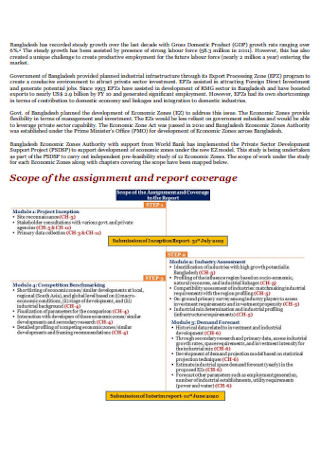
Pre-Feasibility Final Report
download now -
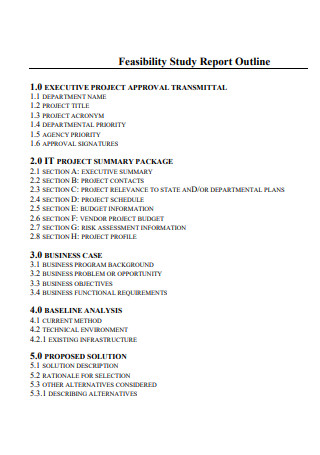
Pre-Feasibility Study Report Outline
download now -
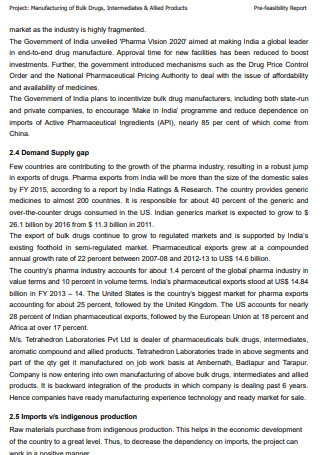
Standard Pre-feasibility Report
download now -
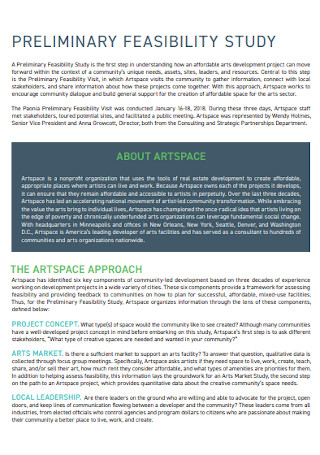
Preliminary Feasibility Report
download now -
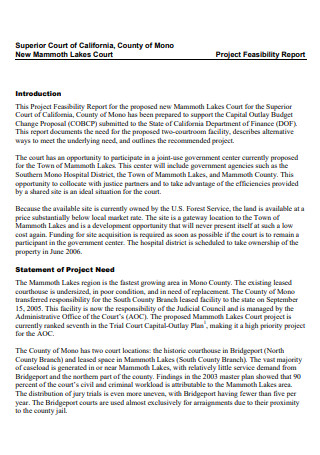
Project Pre-Feasibility Report
download now -
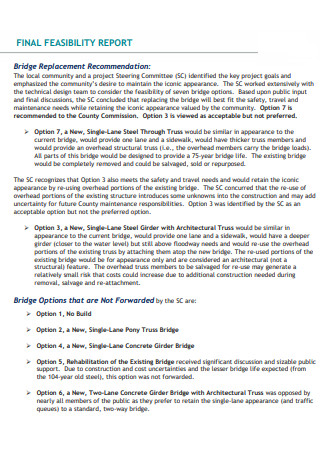
Final Pre-Feasibility Report
download now -
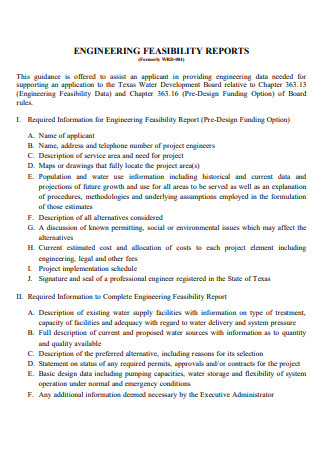
Engineering Pre-Feasibility Report
download now -

Sample Pre-Feasibility Report
download now -
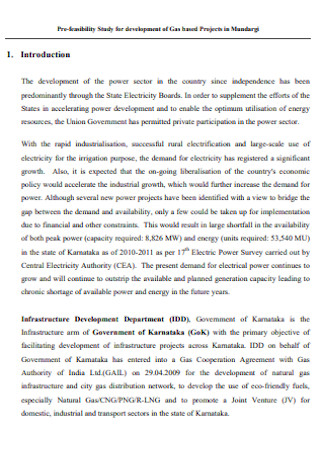
Pre-Feasibility Report on Power Projects
download now -
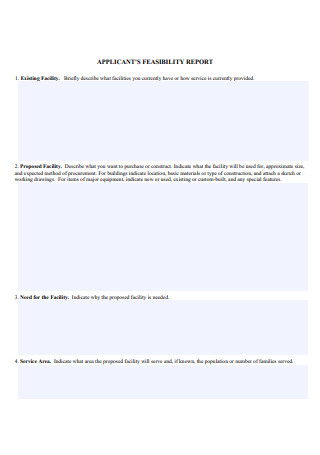
Applicant for Pre-Feasibility Report
download now -
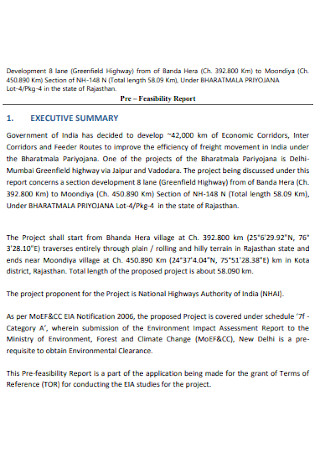
Pre – Feasibility Report Format
download now -
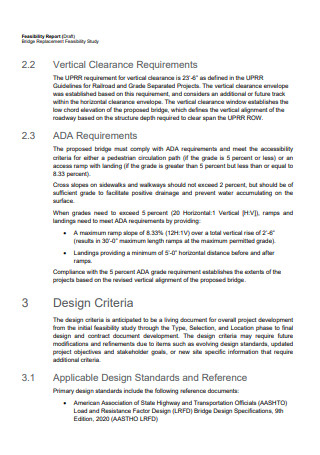
Basic Pre-Feasibility Report
download now
FREE Pre-Feasibility Report s to Download
12+ Sample Pre-Feasibility Reports
What is a Pre-Feasibility Report?
Different Areas of Feasibility Study
Basic Elements of Pre-Feasibility Report
How to Write a Pre-Feasibility Report
FAQs
What are some examples of pre-feasibility reports?
What is the difference between a pre-feasibility study and a feasibility study?
What are the fundamental steps in conducting a pre-feasibility study?
How to create a report for a feasibility study
What is the significance of a feasibility analysis report
What is a Pre-Feasibility Report?
A pre-feasibility report is a clear and detailed report that outlines the preliminary evaluation or initial assessment conducted on a proposed project to determine if the research and development activities and tasks meet the application requirement in the first stage. Project managers, consultants, supervisors, and evaluators undertake a pre-feasibility study to review the major aspects of the proposed project and select the best option to address a specific issue. They prepare a product feasibility report on the preliminary project analysis to demonstrate its advantages and viability and guide them in a proper and reasonable decision-making process on whether to proceed with the proposed project plan or not.
Based on a 2011 statistical report, the accuracy ranges of different aspects of feasibility studies are scoping (-50% to +30%), pre-feasibility (-27% to +30%), feasibility (-20% to +27%), and detailed engineering (-12% to +20%). Also, the data from the report states that approximately 25% of projects fail, more than 20% of some projects perform better than expected, and the remaining 55% of the projects perform more or less than expected. The study suggested that the proposed projects should gain increased scrutiny through peer evaluation and audit to elevate the performance of the feasibility studies. Thus, all project managers, supervisors, consultants, program developers, researchers, and other R&D professionals who work on pre-feasibility and feasibility studies should create a well-integrated pre-feasibility report in conjunction with a risk assessment form or a SWOT analysis.
Different Areas of Feasibility Study
If you are a beginner in working on a pre-feasibility study, it is important to be informed about the different areas of a feasibility study. Understand the core points of each area so that you can easily specify and explain the significant aspects of the proposed project and develop a systematic assessment of its value to the people.
1. Economic Feasibility
It is an assessment that includes a cost/benefit analysis of the proposed project. Use cost-benefit analysis to perform a comprehensive assessment of the proposed project’s economic aspects. Make a comparison between the financial costs and projected benefits of the project using a financial feasibility report. This method can help you in determining the project’s financial viability and the possible cost and benefits of the project prior to the allocation of the final resources.
2. Technical Feasibility
One of the primary areas of a feasibility study is technical feasibility. It is a standard practice for product designers, system engineers, and team managers to undertake as they concentrate on the technical resources that are available to the company, institution, or organization, assess whether it is possible to manufacture a new product or service and structure a product feasibility report. While making a technical feasibility report, determine the technical resources and expertise that your management or organization can provide to be able to meet the project requirements to convert the proposed idea into a completely functional and profitable product or service.
3. Time Feasibility
Also known as scheduling feasibility, time feasibility refers to setting up an estimation of how long the proposed project plan will take to develop and execute. Project managers take into account the period or time frame required to accomplish the project and how the project timeline aligns with the existing business operations that include demand planning and production schedule. The company or organization calculates how much time the project will be done.
4. Legal Feasibility
This type of evaluation investigates whether any area or component of the proposed project is contradicting the legal requirements such as data protection acts, social media laws, and many others. A legal feasibility study assists the business or organization to clarify and recognize the legal aspects associated with the project. Make sure that your proposed project meets the legal requirements and ethical considerations or laws and regulations that implement all activities, deliverables, and tasks in the project scope.
5. Operational Feasibility
Project managers use operational feasibility to measure how well a proposed project solves issues and checks the willingness of the business or organization to provide necessary resources for the development and execution of the proposed project. As the most challenging area of the feasibility studies to gauge, it is integral to discern the commitment of the management to the proposed project plan.
Basic Elements of Pre-Feasibility Report
Conducting pre-feasibility studies is a vital method involved in the business and strategic planning processes of many companies and organizations. Project managers, product designers, and system developers examine the viability of the proposed project by observing various options to narrow down potential ideas. What are the basic elements of a pre-feasibility report?
How to Write a Pre-Feasibility Report
Is the projected revenue enough to proceed with an in-depth project evaluation? What are the risks linked to the idea of the proposed project plan? Writing a well-designed pre-feasibility report helps project managers, designers, developers, and engineers in product manufacturing firms to outline the major details of the internal study conducted to determine the relevance and value of the proposed project.
Step 1: Create an Executive Summary
Make a brief, cohesive, and enticing executive summary of the proposed project. Outline each section of your proposed business plan or project proposal. Introduce your proposed business or project idea to prospective clients, investors, partners, and other stakeholders. Include a short statement that addresses the issue of the proposal defined in the documents. The format of an executive summary is a condensed outline of the documents presented in the proposal or project plan.
Step 2: Describe Products or Services, Technology Considerations, and Marketplace
Explain the main purpose of the products or services that will be developed and realized in the proposed project plan. Add a simple discussion of the technological aspects of the upcoming project such as computer hardware and software and inventory management and determine the effectiveness of the proposed project. Also, describe the product or service marketplace and demonstrate details regarding the initial market research using a market feasibility report.
Step 3: Include a Project Evaluation and Risk Assessment
Evaluate your proposed project by using various financial metrics such as Net Present Value (NPV), Internal Rate of Return (IRR), Payback Time (PBT), Levelized Cost of Energy (LOE), and security analyses. Then, showcase the results based on your data analysis report. Make a risk assessment to identify the possible risks and problems that may suddenly take place while using a risk matrix or a risk mitigation measure. You may also create your own list of potential risk factors that must be considered.
Step 4: Add More Sufficient Information on Sales and Marketing
Use a marketing survey with a focus on supply and demand to outline the needs of the people in connection to the proposed project. Describe your sales and marketing strategy, operational plan, and SWOT analysis.
Step 5: Proofread and Check the Report
Check your entire pre-feasibility report and fully integrate all the fundamental points in your report. If you see that you overlook some sections that need sufficient points, we suggest that you carefully proofread, edit, and revise the document.
Step 6: Prepare the Final Pre-Feasibility Report
Skim your report as you analyze and review the content of the pre-feasibility report such as executive summary, product or service description, competitors’ analysis, projected financials, risks, and mitigating actions, market survey, sales and marketing strategic plan, operational plan, and SWOT analysis. When you are done with proofreading and revision, you can now prepare the final pre-feasibility report.
FAQs
Some examples of pre-feasibility reports are business pre-feasibility reports, product manufacturing process pre-feasibility reports, standard pre-feasibility study reports, project preliminary feasibility outline reports, final analysis pre-feasibility reports, engineering pre-feasibility reports, and pre-feasibility reports on power projects.
The difference between a pre-feasibility study and a feasibility study is a pre-feasibility study briefly observes a series of different components or options and determines the best one in the set, while a feasibility study carefully examines the most effective and worthwhile solution from the pre-feasibility stage.
When you begin your pre-feasibility study, you must conduct a preliminary analysis by outlining the planned services, target markets, and valuable aspects of the project and determining whether there are any overwhelming issues. Next, make a projected income statement that will cover direct and indirect costs and perform a market survey as you define the geographic influence on the market, and review population trends and purchasing power in the community. Then, develop a comprehensive plan for the business organization and operations and prepare an opening day balance sheet. After that, review and analyze all crucial data. Lastly, analyze and decide if the planned business will go on to satisfy long-term aspirations.
If you need to write feasibility study reports, explain the purpose and goal of the project. Next, describe the potential solutions that come from the project. Set the criteria for the in-depth analysis and evaluation of the solutions. Then, mention which solution is most feasible and worthwhile for the project. After that, construct an appealing and logical conclusion statement.
The significance of a feasibility analysis report is to disintegrate varying approaches to a particular issue or a proposed project, to guide readers in becoming insightful on the feasibility of each approach, and to detect financial, logistical, and market challenges of an upcoming project such as the estimated project fund, return on investment or ROI of the potential project, and the market for the proposed product or service.
What are some examples of pre-feasibility reports?
What is the difference between a pre-feasibility study and a feasibility study?
What are the fundamental steps in conducting a pre-feasibility study?
How to create a report for a feasibility study?
What is the significance of a feasibility analysis report?
In order to assess the success factor of a proposed project, it is integral to work on a pre-feasibility study and structure a well-detailed pre-feasibility report. This document provides basic information on the key components of a proposed project which include economic, environmental, financial, and legal considerations, and a comprehensive analysis and evaluation of the merits and viability of the proposed project. If you need to determine the effectiveness of your proposed project, conduct a pre-feasibility study and make an informative pre-feasibility report. So, here are some of our downloadable and printable pre-feasibility project reports available in different kinds of formats.
